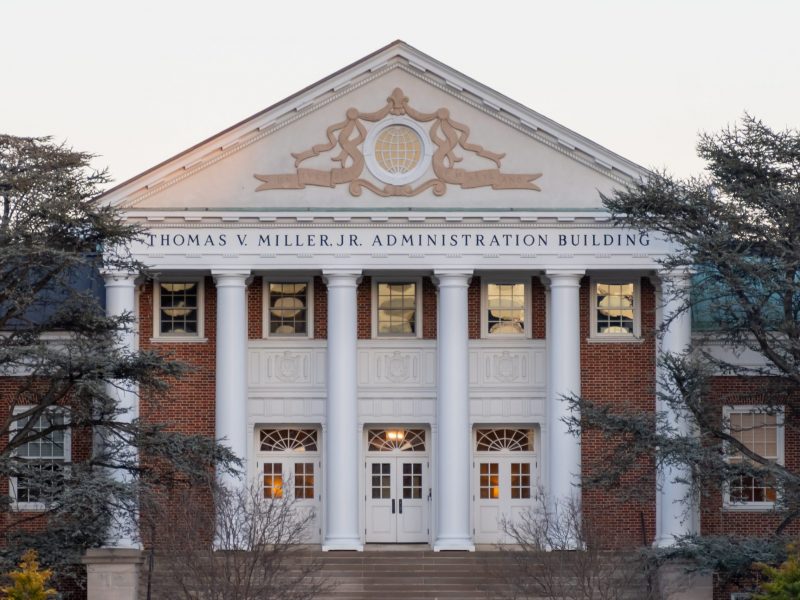In the past five years, Mike Rasta, the manager of Ratsie’s, has watched his customers be slowly lured away by an influx of more then 20 new eateries, forced to stay open later at night to try and make up for business lost during regular hours.
“Every day changes. We’re trying our best to attract business from the bar,” Rasta said. “It’s like they are taking away from the same amount of bread,” he said, referring to an increasing number of restaurants catering to a mostly stagnant student population.
As fast casual businesses continue to emerge in College Park, regional directors of the stores maintain they are doing well, but analysts say it won’t last for long.
“Fast casual” restaurants — those that combine a restaurant atmosphere with fast food service — are very popular in places where people between the ages of 18 and 34 live, said Joe Pawlak, vice president of Technomic Inc., a research company that specializes in food.
While having 23 food vendors in a college town is excessive, Pawlak said it is not uncommon since college students crave diversity, according to the company’s findings.
“If there are too many in one town, it can lead to overkill — give it a few years, certain ones will start to fade out,” he said.
Many agree downtown College Park is lacking in retail variety. While students can choose from a variety of eateries, their shopping and entertainment options are limited.
Increasing the variety of businesses and cutting back on eatery overload is part of the larger city development plan, said Claire Sale, the city’s economic development coordinator.
“It is not going to happen overnight, but we are looking to the future,” she said.
The city’s Economic Development Plan released in 2004 stresses the importance of recruiting professional and technology companies for the city, Sale said.
The plan is a comprehensive strategy for development, basing its findings on surveys of businesses and households and on comparisons of related statistics. But university students’ interests and buying habits were not included in the plan, though Sale said the results will be discussed with the Student Government Association in the coming months.
In a residential survey of the city’s 6,000 households, only 13 percent of the surveys were returned. Of these, about 73 percent of respondents said they would like additional restaurants in College Park, 67 percent wanted new music and bookstores; 58 percent wanted more entertainment venues and 57 percent wanted more clothing and shoe stores.
District 3 Councilman Eric Olsen said the City Council has no control over what businesses come into the city, with most of the power in developers’ hands, but has talked to local developers about recruiting other types of business.
Before Terrapin Station opened over the past few months with Pita Pit, Moe’s Southwestern Grill, Quiznos and others, Olson said the City Council approached its owner, Richard Greenberg, and asked him to make an effort to bring in more retail.
“I actually had a number of conversations with the owners of Terrapin Station about that and they made an effort to court non-food businesses,” Olson said.
Greenberg said he contacted major retailers like Old Navy, Gap and Banana Republic to rent out the space, but the stores weren’t interested. On a trip to Las Vegas to determine which businesses would be appropriate for College Park, he found restaurants made the best offers.
Fast casuals are not only a local trend, they are a national trend as well. Pawlak said he sees fast-casual restaurants continuing to gain popularity since it has continued to bring in 12 percent of the total restaurant industry profit since the late 1990s. In 2003, fast-casual eateries brought in about $6.7 billion and in 2004, brought in $7 billion.
Despite the rise in fast-casual dining, local business vendors don’t seem to mind the added competition that emerged over the past five years.
District 3 Councilman Andrew Fellows attributes the fast casual-trend to Chipotle’s arrival in College Park, after which other restaurants like Noodles and Co., California Tortilla and Potbelly Sandwich Works followed.
“Until Chipotle, we always heard, ‘why aren’t there any restaurants here?’” he said.
Chipotle’s initial popularity made the College Park location the highest grossing in the franchise, Matt France, a representative for the company said.
Moe’s Southwest Grill, a new restaurant in Terrapin Station, decided to open their franchise is College Park because of the large student population and were well aware of the high competition, franchise owner Dan Trump said.
“Our strategy is not driven by other people in the same area. When we look at location, we are looking for customers that would support lunch and dinner,” he said.
Matt Sommer, the franchise owner of Roly Poly Sandwich Shop, said business has been good for opening week and said they thrive on competition.
Pawlak said too many restaurants in one area will cause overall profit to decline, hurting small businesses like Ratsie’s.
Students also agree that they would like to see more variety downtown.
“I would like to see more hangout places and things you can do, maybe some athletics facility open when the CR. is closed,” said sophomore cell biology major Maid Amman.
Freshman letters and sciences major Kristin Shaper said its hard for her to decide to eat because there are so many choices.
Olson said he thinks College Park will have a hard time bucking the eatery trend, but if one retail store manages to work its way into the city, a different trend could begin.
“In community meetings, I have heard a lot of people complain about the number of chain fast-casual restaurants,” he said. “ It’s the only thing we can attract.”


